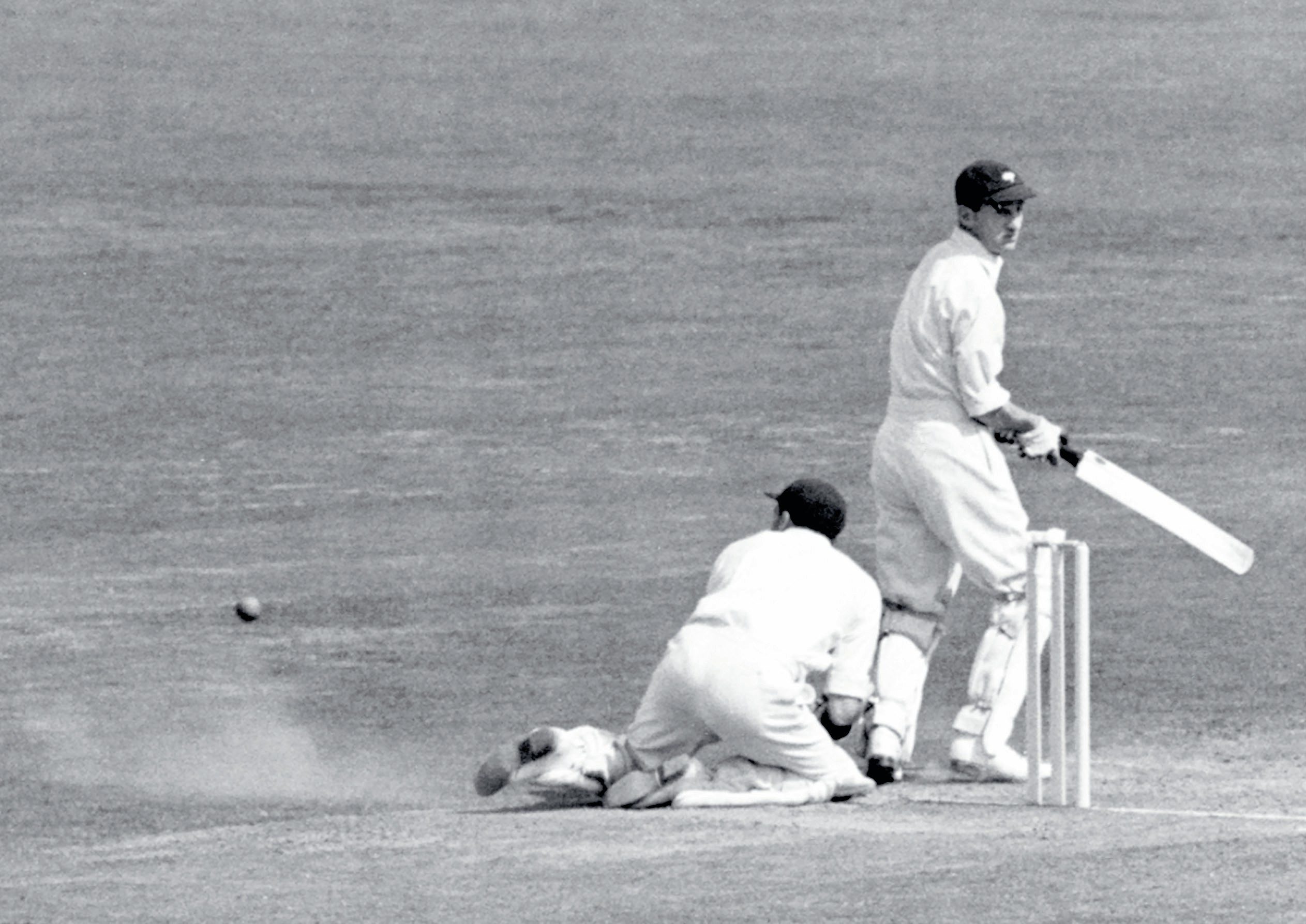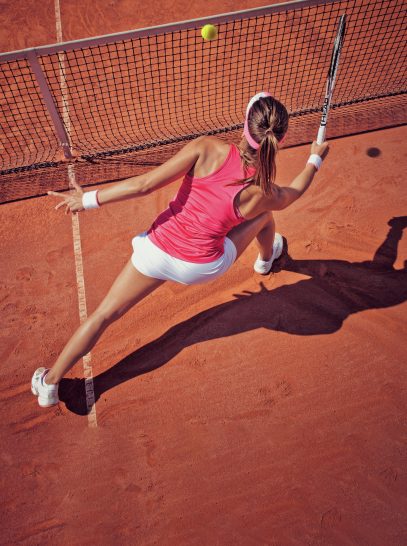Sport in the 1960s Part 1
John Ireland looks back at an era that changed sport forever

EXAM LINKS
The amateurism vs professionalism debates linked to a variety of sporting case studies are part of the sport and society/historical analysis sections of all the major exam boards.
The period of the 1960s is generally regarded as a ‘watershed’ era, featuring changes that impacted on sport, lifestyles and society as a whole.
Postmodernism
Postmodernist philosophy originated in the 1940s and developed to supplant modernist views at the outset of the 1960s. Postmodernism challenged conventions established by the higher orders of society during industrial expansion in Victorian times. Consequently, inflexible class distinction began to disintegrate. George Orwell’s prediction that the UK was moving openly and obviously towards egalitarianism was beginning to be realised.
KEY TERM
Egalitarianism The belief that all people are socially equal.
Postmodernism was a key stimulant for great change in society. The new wave of thought not only transformed sport, but also areas such as art, theatre, music, literature and architecture. In more general terms, British people desired change and sought to take opportunities to improve their quality of life. The reason behind such desires was that the majority had endured economic depression (1930s), at least one world war (1939–45) and austerity (1950s). In addition, the values associated with imperialism were increasingly considered outdated, with the dwindling empire undermining British supremacy.
Such events provoked a new approach in outlook and social functioning, which transferred to sport. The sway of postmodernism meant that the relaxation of class boundaries was possible, and this break of demarcation was to have a comprehensive effect on sport in terms of opportunity, participation and pursuit of excellence. Such ramifications had their origins in the 1960s watershed.
Modernism vs postmodernism
Modernism preceded postmodernism. It emerged after the mid-nineteenth century and was synonymous with strictly restrictive views on morality and social class distinction, and rigorous objectivity that imposed order in society.
Modernism influenced sport. For example, during this time amateurism was perceived as honourable while professional sport was looked down upon. Furthermore, women’s sporting opportunities were restricted and determined by men, sport on Sundays was against the law, and gambling away from the course illegal.
Postmodernism is associated with scepticism. Therefore, people were given opportunities to change attitudes and establish their own beliefs and values, which had previously been imposed by convention. The modernist view that society conformed in order to work towards a grand design was now questioned. The pursuit of personal autonomy became fashionable. In contrast with the previous era, postmodernism was aligned with individual self-expression.
Professionalism
‘For much of the second half of the twentieth century, British sport was poised between an amateur past and a free market future.’
Holt and Mason (2000)
This quote implies slow transition, but the transformation from amateur values gained impetus during the 1960s. This led to future opportunities for commercialism and media promotion. In this era, amateur players disappeared from top-class sport and professionals grew in status and wealth. Such change was made possible by the erosion of class barriers in the postmodern era.
Payment for some amateur performers, although against the rules of the governing bodies, was not unheard of. A number of athletes enjoyed payment via expenses. Such remuneration was contradictory to the values of amateurism and was termed veiled professionalism or shamateurism. In some sports, such as athletics and swimming, illegal payments were difficult to hide. In these sports, lack of finance seriously inhibited those from working-class backgrounds.
Professional sport
According to Harvey’s Encyclopaedia of Sport, 60 organised sports were played in Britain by the end of the 1950s. However, only six had significant numbers of legitimate professionals:
■ Cycling: 7000
■ Football: 4000
■ Boxing: 1700
■ Golf: 1500
■ Cricket: 300
■ Horse racing: 270
Even this total of just below 15000 is misleading. The 7000 cyclists includes all those with racing licences, and few made a living from competitive riding. Boxing tournaments were uneconomical and on a steady decline. Most golf professionals were, in reality, coaches, and fewer than 20 drew regular tournament payments.
Cricket
The 1960s proved a turning point in the format and governance of cricket. The Marylebone Cricket Club (MCC) was established in 1787 and had responsibility for the laws of the game until 1969. The committee was exclusive, comprising men of social and economic privilege.
Before the 1960s, amateur and professional cricketers coexisted, but in very different circumstances and conditions. The former belonged to the upper classes, and enjoyed better changing facilities, first-class travel and superior hotel accommodation during tours and away fixtures. They were selected as captains and often filled roles as batters or slow spin bowlers.
Professionals, on the other hand, were made to earn their fees, often as hardworking fast bowlers. They were addressed by their surnames, while the amateurs answered to ‘Mr’ or ‘Sir’. In county cricket, amateur and professional players often entered the field of play through different gates, despite being part of the same team.
The language and etiquette of the game was rooted in imperial values. For example, ‘playing with a straight bat’ indicates personal qualities like honesty, while the term ‘that’s not cricket’ refers to behaviour which is unfair. Cricket demonstrated the dignity and morality that Britain wanted to display to its empire.
The end of amateurism
Cricket was guilty of veiled professionalism. Jim Laker, a leading professional cricketer, apparently requested inclusion as an amateur when he was selected to tour with England in 1958. Laker’s logic was that the expenses claimed by amateurs were equal to the payments made to professionals, but the professionals were required to pay tax on their earnings. Further acrimony emerged when Laker reported that one amateur had confided that he couldn’t have afforded to turn professional.
Disenchantment over the issue of sports payment began to emerge in this free-thinking postmodern era. In 1963, the MCC abolished the distinction between professionals and amateurs, with all first-class cricketers becoming professionals.
The MCC had in fact broken with tradition as early as 1952 by appointing the first professional England cricket captain, Len Hutton. Though an influx of talented amateurs during the 1950s and 1960s ended with amateur Colin Cowdrey captaining England in an unpaid capacity in 1968, the era of the amateur with all its socialclass differences truly ended in the 1960s. The gentlemen (amateurs) vs players (professionals) cricket fixture, which had first been played in 1806, ended after 1962. At one time this drew large crowds and enjoyed high status. Along with the Eton vs Harrow match, these fixtures were highlights of the English summer.
Crowds reduced dramatically following a surge in the immediate postwar period, and county cricket began to lose money. Games were played midweek, but Saturday was the only time when working people could attend. Alternative leisure activities increased, foreign holidays became popular and working people were often affluent enough to own a car. Desired improvements in quality of life were becoming a reality.
The shortened game
The MCC was forced to introduce a 1-day version of the game in 1962. This immediately attracted sponsorship and brought commercial revenue to cricket. It was attractive and exciting for the general public, and most importantly it produced a result within the day. Sunday matches, again with a limitedover format, also became popular. This greatly upset the Christian group known as the Sabbatarians.
Although successful, the abridged version of the game did not sit well with traditionalists. Nevertheless, it expanded to be played internationally by 1977. Often referred to as whiteball cricket, the format developed into a floodlit extravaganza, with players dressed in team colours and music highlighting the action.
One-day cricket was yet another factor that curtailed amateur involvement, and with it social class divisions in the game. Cricket has recovered from gross financial difficulties experienced in the early 1960s to become a vibrant sport and viable entertainment commodity.
The latest white-ball version is 100-ball cricket (‘the Hundred’). With teams based in cities across England and Wales, this tournament prioritises fast, entertaining, non-esoteric play, and is designed to be inclusive to all ages, dispositions and genders. In August 2021, a crowd of almost 25000 at Lord’s watched the triumph of the Oval Invincibles (women) and Southern Brave (men) in the first season of the Hundred, with both finals being held on the same day.
KEY TERMS
Sabbatarians A Christian group which believed that the Sabbath should be observed in accordance with the Ten Commandments, which forbid any work on the Sabbath (usually Sunday). This observance has roots in modernist early industrial Britain, and was linked to theories about the dignity and honour of manual labour.
White-ball cricket Refers to limited-over games played with a white ball in order to increase visibility under floodlights.
Athletics
The initial discontent concerning finance arguably emerged in athletics. The Amateur Athletic Association (AAA), directed by Lord Burghley, believed in the values of amateur sport founded by the upper classes and nurtured in the public schools during the mid-to-late-nineteenth century. Managed by a middle-class committee, the AAA maintained fierce opposition towards any financial rewards for performers, on the grounds that payment caused corruption. Even reimbursement for incurred costs necessary for travel, training or equipment was refused.
Gordon Pirie, Britain’s foremost long-distance runner, was forced to retire in 1961, claiming that competition cost him £500 per year. At the time, this figure represented a year’s income for the average man. Pirie was vitriolic in his criticism of the AAA’s outdated values, asserting in writing that amateurism prevented Britain from competing on equal terms with overseas athletes. He spoke of ‘endless humiliating worries about managing money in support of a family’.

Dorothy Hyman, daughter of a mine worker, struggled to finance her international athletics career as a sprinter. Against the odds, she secured bronze and silver medals at the 1960 Rome Olympics. Amateurism was so entrenched that Hyman was refused permission to publish her autobiography prior to the 1964 Tokyo Olympic Games, on the grounds that ‘she would profit from athletic successes’.
Hyman and Pirie both called for professionalism in track and field. However, neither wanted payment for winning. They advocated that a fee should be paid for commercial opportunities and appearances.
Disenchantment in athletics did not just come from isolated voices, but from a wider body of representatives who felt they could no longer compete with nations who enjoyed better financing and preparation, e.g. the USA and Eastern Bloc countries (Box 1).
Box 1 Cold War sport
Athletes from Eastern Bloc countries such as the USSR and East Germany received state funding. This freed them from work commitments and financial constraints. Sport was prioritised in the Eastern Bloc because it was seen as an integral part of political (communist) ideology. Success in sport was vital to the operation of the governing regime, as well as providing a ‘shop window’ display of communist excellence to the rest of the world.
The USA adopted a system of awarding scholarships to talented sports performers. Degree study was designed to accommodate serious training and preparation for high-level competition. State sponsorship and the scholarship system allowed athletes to train and prepare as professionals.
Sport here was also part of a political agenda, as the USA was determined to prove that its capitalist system was superior to the Eastern Bloc’s communism. This was the era of the Cold War, when the two cultures existed in a state of bitter enmity.
Expensive expectations
Mindful of the pathways toward excellence taken by other countries, Christopher Chataway, an Oxbridge amateur runner and future Conservative MP, commented in the aftermath of Rome 1960:
‘Olympic athletes may have been gentleman amateurs before the First World War, today they are clearly not. Athletics should be made an open sport forthwith.’
Open sport recognises and perm professional involvement and participation. While British athletes were demanding the opportunity to compete on equal terms, the public expected better outcomes from international representatives. Expectation had arisen partly because television was bringing performances into the home, so the public became aware of the progress of other nations. Also there was increasing realisation that Britain’s prestige overseas was declining along with its empire. Success in international sport was becoming more important to postmodern Britain.
Prime Minister Harold Wilson understood the political value of sport, and appointed the first minister for sport in 1964. This led to the creation of the Sports Council, which prioritised building sports facilities and eventually became involved in distributing finance.
The Sports Council experienced difficulties coordinating the amateur governing bodies, which had been accustomed to managing their own affairs. However, in an advisory capacity, the council opened the way for the establishment of the Sports Aid Foundation in the 1970s, which provided significant benefits to Olympic athletes. The foundation attracted commercial sponsorship and provided funding to talented young performers, allowing them to train as full-time professionals.
Appearance fees were not large. However, British athletes still enjoyed an exceptional period of success on the track in the early 1980s, with record-breaking performances from the likes of Sebastian Coe, Steve Ovett and Steve Cram. Appearance money and other payments were firmly established. Amateurism in the old sense of the term had finally collapsed, not only due to the influence of media and advertising, but also as a result of the earlier campaigns by disadvantaged amateurs.
Prize money today is comparatively lavish. Sisay Lemma, the winner of the 2021 London Marathon, received £80,000 in prize money for running the distance in under 2 hours 5 minutes. He slowed down in the final few paces to wave to the crowd, and in doing so unwittingly lost an additional £18,000 due to missing the next target time by 2 seconds. The victory will have earned Lemma even more revenue in endorsements.
KEY POINTS
■ The 1960s were a watershed era in sport. The philosophy of postmodernism underpinned the changes in this decade.
■ Social class greatly influenced twentieth century sport, often restricting opportunity. Postmodernist thinking opposed class barriers and challenged convention.
■ UK sport transitioned from amateur traditions to professional operations throughout the twentieth century. This process was slow, but accelerated during the 1960s. Crowds had reduced during the postwar period, and many sports experienced financial difficulties.
■ Cricket abandoned its amateur traditions in 1963. One-day cricket encouraged a professional approach and brought money into the game.
■ Amateurism at elite levels in British athletics collapsed during the 1960s, due to the protests of disadvantaged athletes and the sporting achievements of the USA and the Eastern Bloc.





